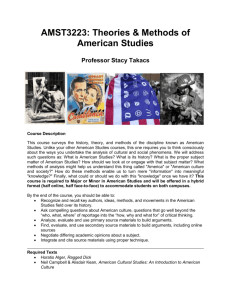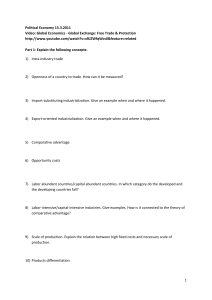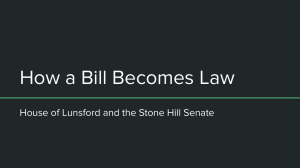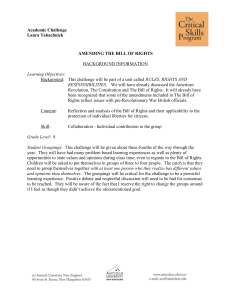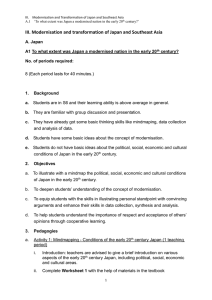Course/Grade Level: 8-12 Lesson Title: Supreme Court Ruling on
advertisement
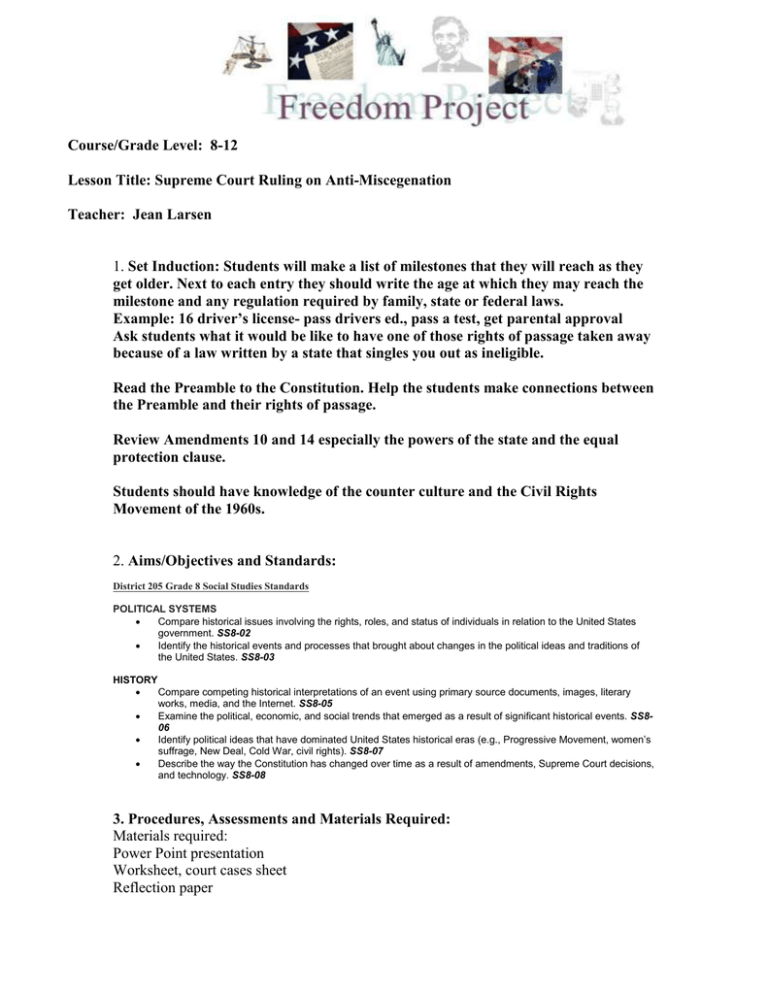
Course/Grade Level: 8-12 Lesson Title: Supreme Court Ruling on Anti-Miscegenation Teacher: Jean Larsen 1. Set Induction: Students will make a list of milestones that they will reach as they get older. Next to each entry they should write the age at which they may reach the milestone and any regulation required by family, state or federal laws. Example: 16 driver’s license- pass drivers ed., pass a test, get parental approval Ask students what it would be like to have one of those rights of passage taken away because of a law written by a state that singles you out as ineligible. Read the Preamble to the Constitution. Help the students make connections between the Preamble and their rights of passage. Review Amendments 10 and 14 especially the powers of the state and the equal protection clause. Students should have knowledge of the counter culture and the Civil Rights Movement of the 1960s. 2. Aims/Objectives and Standards: District 205 Grade 8 Social Studies Standards POLITICAL SYSTEMS Compare historical issues involving the rights, roles, and status of individuals in relation to the United States government. SS8-02 Identify the historical events and processes that brought about changes in the political ideas and traditions of the United States. SS8-03 HISTORY Compare competing historical interpretations of an event using primary source documents, images, literary works, media, and the Internet. SS8-05 Examine the political, economic, and social trends that emerged as a result of significant historical events. SS806 Identify political ideas that have dominated United States historical eras (e.g., Progressive Movement, women’s suffrage, New Deal, Cold War, civil rights). SS8-07 Describe the way the Constitution has changed over time as a result of amendments, Supreme Court decisions, and technology. SS8-08 3. Procedures, Assessments and Materials Required: Materials required: Power Point presentation Worksheet, court cases sheet Reflection paper 1. Students will view the Power Point presentation. 2. Discuss what it would be like to have to leave your family in the case of the Lovings and not be able to return as a couple or as a family. 3. Discuss the issues that the Lovings faced listed on the arguments page. 4. In groups assign 2-4 documents. Have students organize the titles on the worksheet with their rationale for placement supporting the Virginia arguments or the Loving arguments. Note: Students with disabilities or ELL should be given an edited list with fewer arguments to arrange. 4. Resources and Scholarship: Tell the Court I Love My Wife, Peter Wallenstein Public Vows, Nancy Cott From Jim Crow to Civil Rights, Michel J. Klarman 5. Conclusion/Lesson Wrap-up: Students should be encouraged to discuss how the timing of the court case was helped by the Civil Rights movement.



